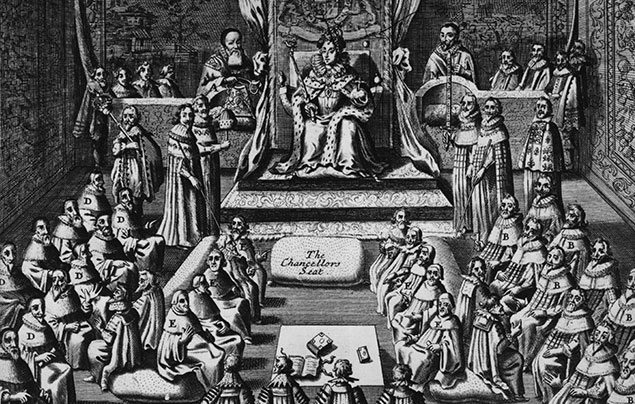
New Nonprofit Finance Fund Survey
07.01.2025 | Linda J. Rosenthal, JD

“The time is the 1590s” in “England of the first Elizabeth….”
It’s a period of social stress: plague, poverty, inflation, malnutrition, property crimes, riots and – of course – religious upheaval. According to Professor Emeritus James J. Fishman of the Pace University School of Law, that’s a perfect setting for the birth of the law of modern philanthropy.
In Encouraging Charity in a Time of Crisis: The Poor Laws and the Statute of Charitable Uses of 1601 (December 5, 2005) Pace Digital Commons, this distinguished nonprofit law scholar describes how, over the course of the turbulent 16th century, privileged Englishmen tinkered around with ways to help (some of) the marginalized members of the population. One category clearly out of luck was what Alfred P. Doolittle, a few fictionalized centuries later, referred to – (including himself) – as the “undeserving poor.”
Those efforts panned out: In 1597, Parliament enacted the Poor Laws and then approved the landmark Statute of Charitable Uses of 1601. This impressive legislative package – a public/private partnership – was surprisingly progressive. It was designed to spur broader and more generous private-sector charitable giving (along with new government aid) while keeping an eye on the problems caused by “opportunistic fiduciaries.”
The 1601 law “expressed the English government’s desire to replace the whim of patronage with legally enforceable adherence to principle in philanthropic action.” More fundamentally, it embodied the feudal common-law doctrine of “parens patriae”; the sovereign (that is, the “father of the country”) is not only authorized but obliged “to act on behalf of those who are incapable of acting for themselves, such as charitable beneficiaries.”
An indispensable element of these newly codified charitable-trust laws was meaningful oversight and investigative authority and procedures. Indeed, the oft-quoted Preamble to the Poor Laws made clear that people in the Tudor Era were well aware that “…[c]haritable funds have been and are still likely to be most unlawfully and uncharitably converted to the lucre and gain of some few greedy and covetous persons, contrary to the true intent and meaning of the givers and disposers thereof.”
Among the government figures tapped for regulatory duty was the powerful (but as-yet-unofficial) legal adviser to the Crown known as the “attorney general.” (This government position was formalized several decades later.) The significance of this choice lay in the nature of the role of this royal adviser as including some of the “parens patriae” duties of the Crown.
“When the charitable-trust form crossed the Atlantic, the Attorneys General of the colonies and then the several States inherited this trust-protection responsibility from their Crown counterpart.” Now, some five hundred years after enactment of the seminal Statute of Charitable Uses, that legislation continues to be relevant to the jurisprudence of the United States.
The model of an attorney general with responsibility to protect the interests of the general public in connection with charitable trusts, assets, and solicitations is now “firmly rooted” in each and every state, territory and the District of Columbia, according to the National Association of Attorneys General. “While the IRS and the FTC play valuable roles, State Attorneys General remain the chief custodians of the public’s trust in the nonprofit sector.”
In Donor Disclosure: The Hottest Ticket in Town (May 25, 2021), we posted initial thoughts on the Supreme Court oral argument in late April in Americans for Prosperity Foundation (AFPF) v. Bonta and Thomas More Law Center v. Bonta [consolidated docket]. A decision could come at any time this month.
It’s a closely watched case of significant importance to the nonprofit community – and deep concern in many quarters. It’s fair to describe the mood as “alarm bells” ringing.
The long-established and well-settled parens patriae authority – indeed, duty – of state attorneys general to act in the role of protector of the public interest on charity matters begs the key question at the heart of this controversy. Why are the two organizations at the center of this seven-year-long litigation fighting so hard to block the confidential, nonpublic submission to the Attorney General of California of a copy of the federal Form 990, Schedule B, that they submit each and every year without objection to the Internal Revenue Service?
And why are they aiming a First Amendment cannon here to swat this proverbial fly?
“This would seem to be a reasonably modest and straightforward case….,” (in the government’s favor) but “[t]he chorus of opposition says otherwise….” The mountain of amici curiae briefs supporting the petitioner-organizations “… is among the largest such assemblages ever presented to the Court. Their number and their arguments suggest a much bigger game is afoot.”
In an interview for The Chronicle of Philanthropy, just after the oral argument, Professor Roger Colinvaux of Catholic University’s Columbus School of Law makes clear the growing trepidation in much of the philanthropy sector awaiting the Supreme Court’s decision. The “Americans for Prosperity Foundation made its initial volley in a cynical effort to invalidate more than a half century of transparency laws covering the nation’s over 1.3 million charities….”
Continuing, he pulls no punches: “[T]his case is not about the California law.” Its “… main target is the public information reporting requirements Congress enacted … in … 1969….” Concluding, he adds this chilling warning: “In terms of driving activity into darkness, this case could be the forerunner to a Citizens United for charities.”
That’s not necessarily hyperbole. A few years ago in the Second Circuit, there was a challenge to an almost identical New York rule. The petitioner-organization lost at both the trial and appellate levels but that may not be the end of this assault. Disclosure opponents suggest the next target may be the federal rule, notwithstanding its long and unchallenged history, and no matter the outcome of this current Supreme Court case litigating the Ninth Circuit’s position.
For the record, the name of that case on the East Coast was Citizens United v. Schneiderman, 882 F.3d 374 (2d Cir. 2018).
(Yes. That Citizens United.)
Just as troubling as the full-throttle First Amendment artillery blast is the nature of the projectile. It’s full of incorrect and misleading “facts,” inapplicable law, and specious argument from the petitioners as well as their considerable army of amicus-curiae supporters.
“It’s a lot of yakety-yak,… [t]hat is simply 100 percent not true,” says Jan Masaoka, who heads up the California Association of Nonprofits, one of the amici curiae supporting the California Attorney General.
That’s where we left off at the end of our May 25th “hottest ticket” post.
We pointed to four main categories of “yakety-yak,” promising to follow up. These misrepresentations are:
In this post, we’ve covered part of the first category. We’ll continue from there. It may involve just a bit more history.
Where were we?: Ah yes, at the twilight of Elizabeth I’s reign: “The time is the 1590’s….”
— Linda J. Rosenthal, J.D., FPLG Information & Research Director
